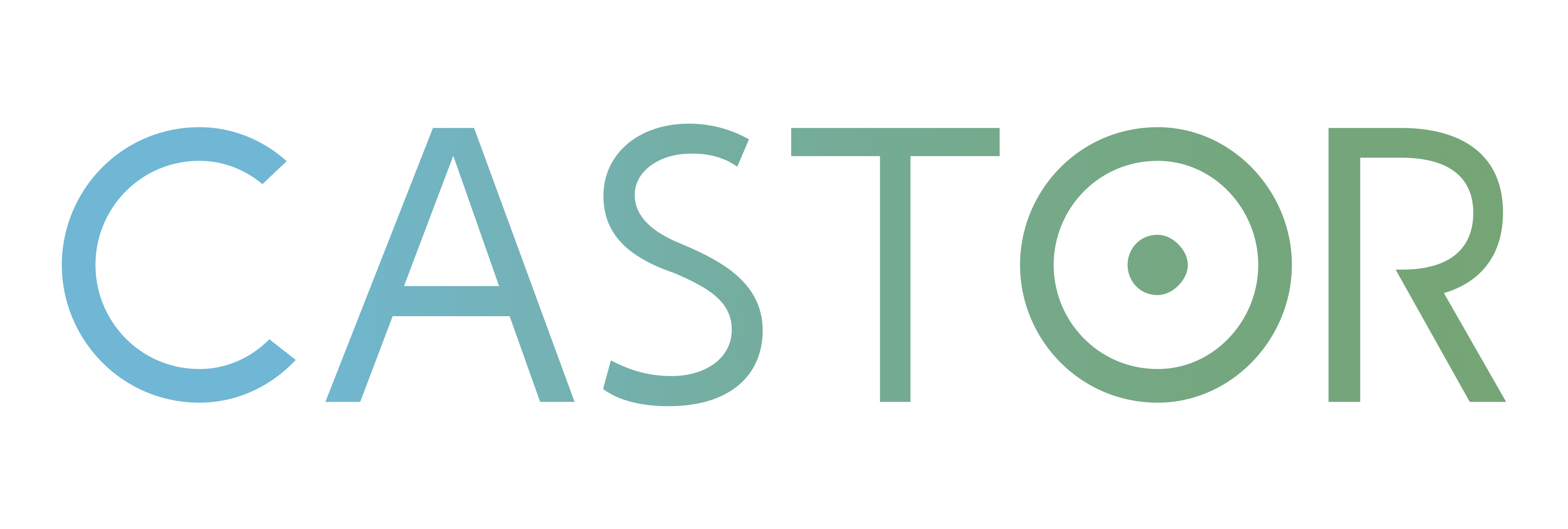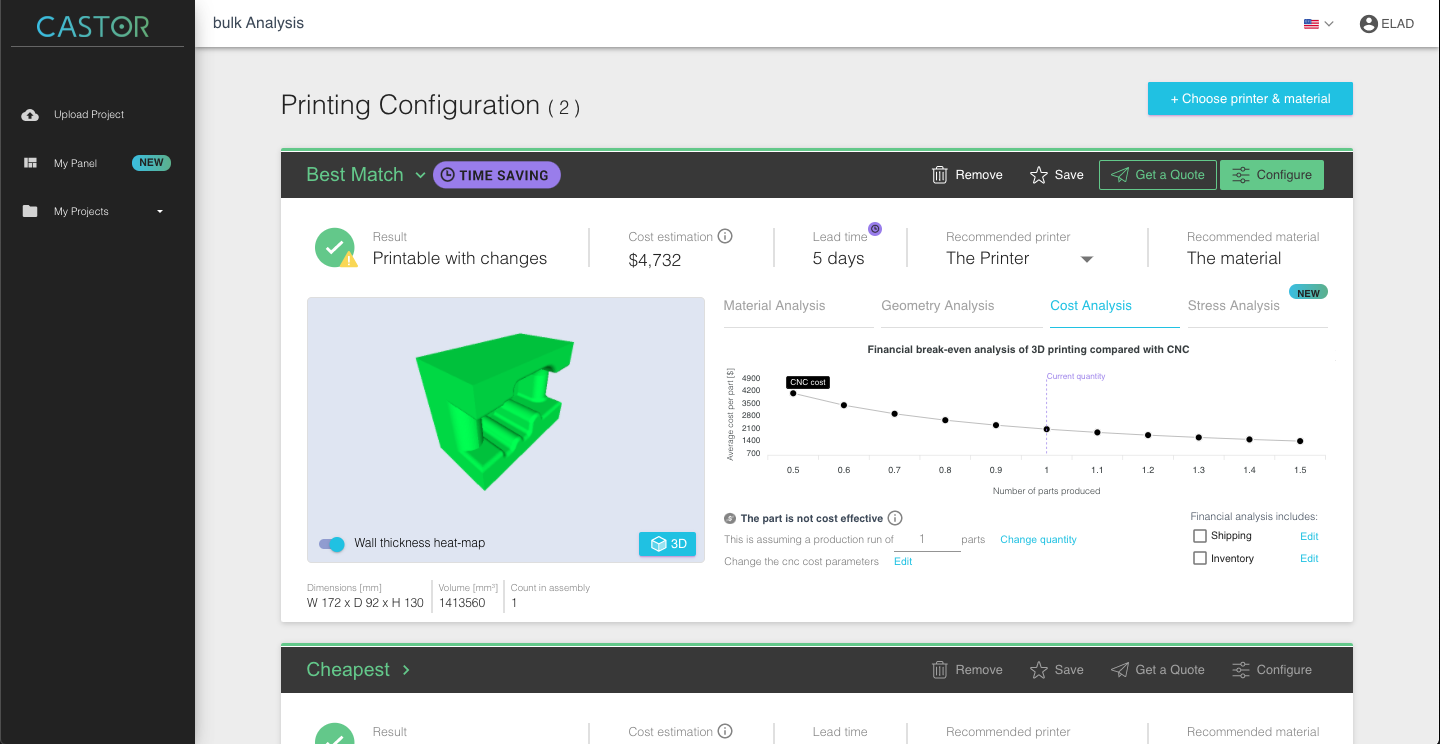
CASTOR is an exhibitor at 3DPrint.com’s upcoming AMS online industry summit (Feb 9-10, 2021). Register for the event here.
As most companies already know, 3D printing holds a large number of benefits for manufacturers. It speeds and increases the efficiency of production, lowers parts’ complexity while maintaining functionality – and these are not the only reasons why 3D printing is claimed to have been disrupting conventional manufacturing.
But despite the many advantages, when transitioning to 3D printing from traditional manufacturing, it can be quite difficult to know how to harvest and use those abilities on an existing design.
Creating parts for 3D printing, which is known as Design for Additive Manufacturing (DfAM), refers to changes in parts’ design that can lead to weight reduction, consolidation of parts, and designing complexed-geometry parts.
Part Consolidation, for example, is especially beneficial because it reduces the number of parts that need to be designed and manufactured into the final assembly. Reducing the number of parts leads to savings in the supply chain, packaging, transportation, inventory and assembly. It increases bottom-line savings and also dramatically increases production speed.
The advantages in finding opportunities like part consolidation are huge for manufacturers. Obviously, every company would like to use these abilities for its own profit.
The question is how can they discover these possibilities and utilize the benefits of 3D printing in their production line?
To do that, engineers need to question the traditional way that parts were designed and to open their minds to new ways of manufacturing.
Easier said than done, but what if engineers could have a tool that automatically reveals those opportunities for re-design, then suggests the changes to be made and finally tells exactly how much cost savings they will gain?
This is what CASTOR is all about.
CASTOR’s goal is to help manufacturers drive profitability by using industrial 3D printing, creating tools which solve the challenge of identifying where, when, and how to use 3D printing to reduce costs.
CASTOR is a proprietary software which enables manufacturers to utilize the benefits of industrial 3D printing, by automatically analyzing CAD files of thousands of parts and assemblies at once, and provides full technical and economic analysis, including professional insights on re-design for additive manufacturing.
How does it work? Let’s stay with the part consolidation example.
The complex algorithm of CASTOR detects consolidation methods between two adjacent parts, such as bolts and holes, that was originally designed for traditional manufacturing methods, but are not necessary for a 3D printed part. If multiple parts can be combined into a single part, the algorithm detects and highlights this opportunity for the user.
In a similar way, another major capability of the software is identifying weight reduction opportunities by reducing the material waste of bulky parts.
Undoubtedly, the engineers themselves know best about the geometrical considerations and limitations that their parts require, and what compromises they are willing to make in order to 3D print the parts, that is why CASTOR serves as a tool to assist engineers and support their decision making, not replace them.
The software is built in a way that almost every default figure can be modified and adjusted according to specific preferences, such as material properties sensitivity, customized cost estimation calculations, operational costs from different points of the supply chain, and more.
After the engineer is notified on these opportunities for re-design, he can quickly assess the part’s likelihood to failure due to external forces acting upon it, using CASTOR’s unique finite elements analysis which is tailored specifically for additive manufacturing.
With just one click of a button, CASTOR detects and highlights opportunities for new innovative ways of production, that would be hard to impossible to identify manually and without the proper expertise, helping manufacturers in easier adoption of industrial 3D printing while reducing costs.
If you wish to learn more, meet CASTOR on AMS 2021 – CASTOR is exhibiting in the AMS 2021 event and will be showing a live demo of the software and its advances capabilities!
More information on CASTOR can be found on: https://www.3dcastor.com/
Subscribe to Our Email Newsletter
Stay up-to-date on all the latest news from the 3D printing industry and receive information and offers from third party vendors.
You May Also Like
3D Printing Unpeeled: New Arkema Material for HP, Saddle and Macro MEMS
A new Arkema material for MJF is said to reduce costs per part by up to 25% and have an 85% reusability ratio. HP 3D HR PA 12 S has been...
3D Printing News Briefs, January 20, 2024: FDM, LPBF, Underwater 3D Printer, Racing, & More
We’re starting off with a process certification in today’s 3D Printing News Briefs, and then moving on to research about solute trapping, laser powder bed fusion, and then moving on...
3D Printing Webinar and Event Roundup: December 3, 2023
We’ve got plenty of events and webinars coming up for you this week! Quickparts is having a Manufacturing Roadshow, America Makes is holding a Member Town Hall, Stratafest makes two...
Formnext 2023 Day Three: Slam Dunk
I’m high—high on trade show. I’ve met numerous new faces and reconnected with old friends, creating an absolutely wonderful atmosphere. The excitement is palpable over several emerging developments. The high...


































